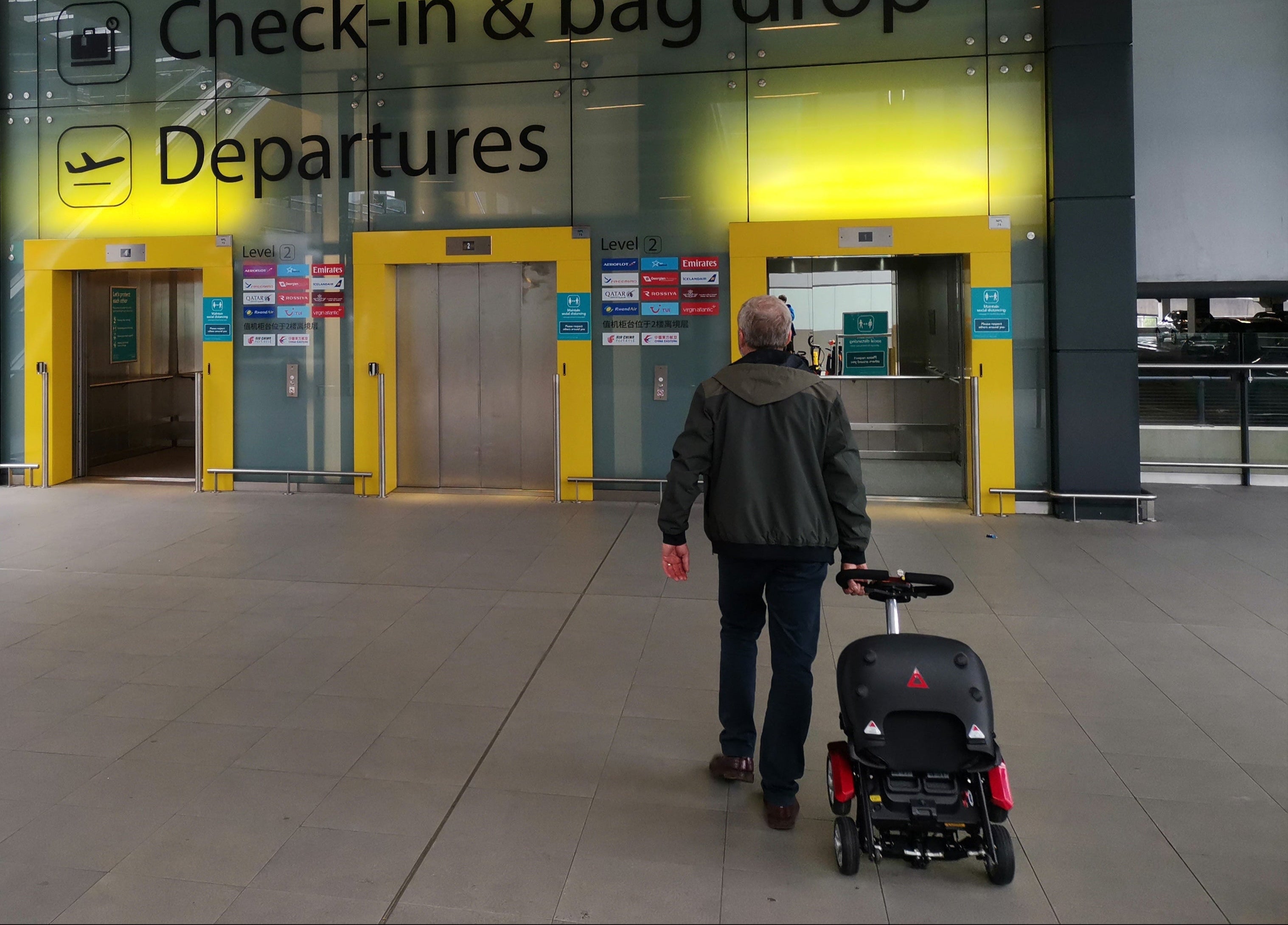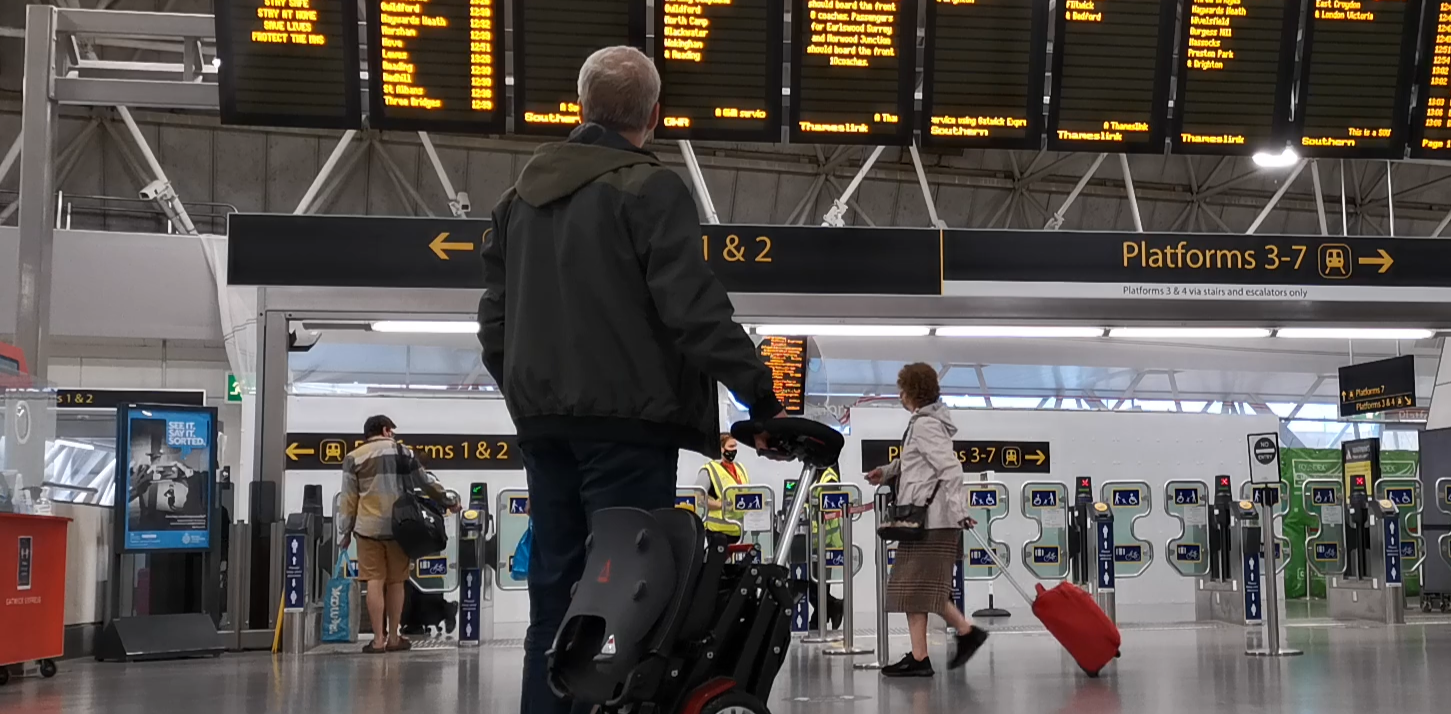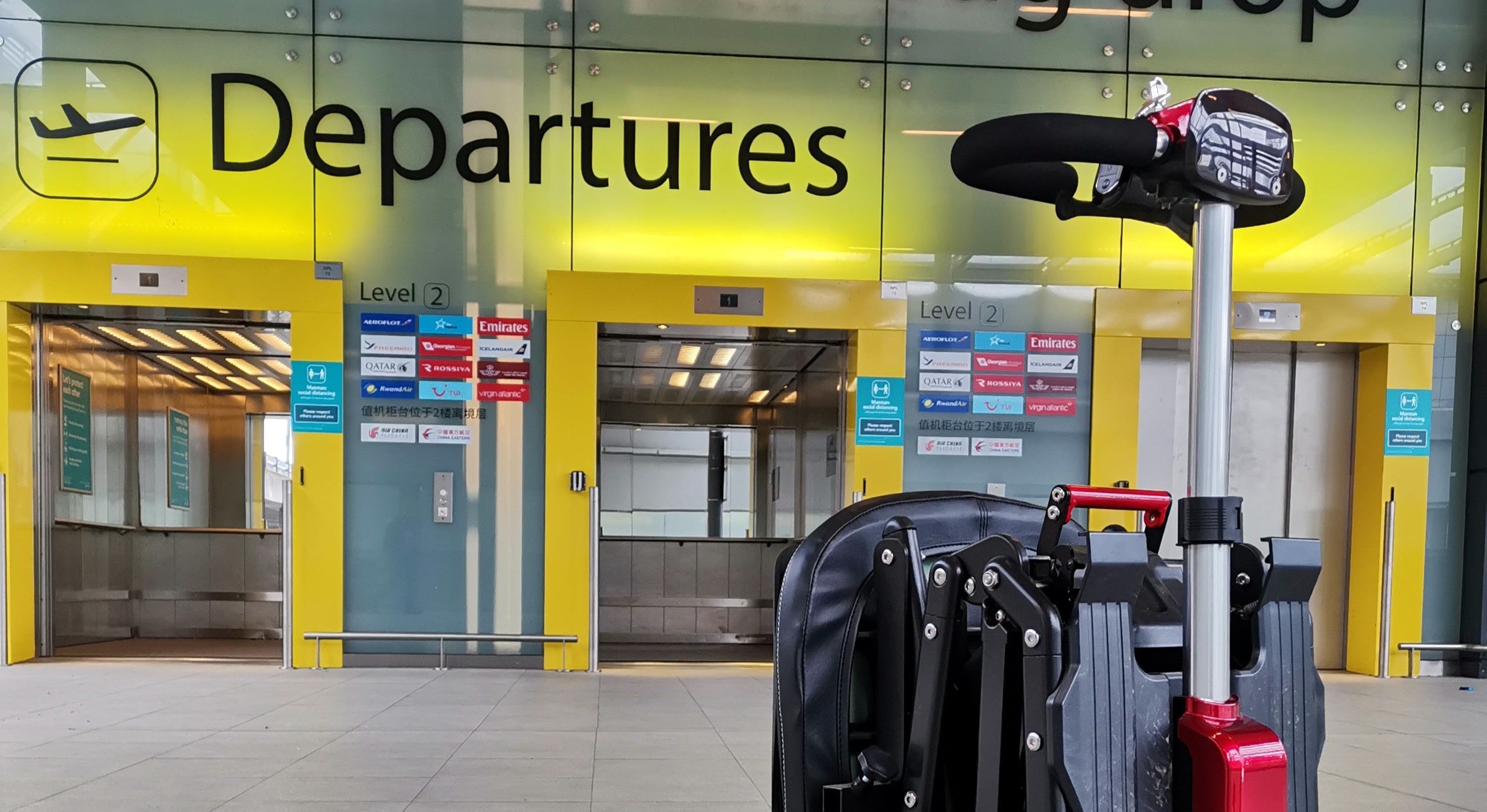Ready for adventure?
Planning to take your mobility scooter abroad? Most airlines require lithium batteries under 300Wh, and all our scooters (except the Ren) meet this requirement.


Before You Travel
Before flying, contact your airline to confirm their policies on travel mobility scooters, as some, like Ryanair, have a 2 scooter limit per flight.
To travel on most airlines, the lithium battery in the travel mobility scooter must be less than 300Wh capacity so make sure to check if the battery complies with airline regulations.
When notifying the airline that you want to bring a folding mobility scooter with you on your trip, they will ask for specific information which you can often find online or in your product manual. Ensure you print off a few copies of all requested paperwork just in case you need to present this at any point of your trip. Do allow yourself as much time as possible before flying to ensure all procedures are followed.
Find specific airline information below.


At The Airport
Arrive extra early to allow ample time for security checks on your folding mobility scooter, as staff may need to inspect it thoroughly and attach necessary tags. Inform check-in and security staff about your scooter and have all required paperwork ready.
Additionally, why not take advantage of pre-boarding services offered to passengers who need assistance as this can relieve pressure we face when travelling, leaving you with a clear head and worry-free journey.


Boarding
When boarding your flight, your folding mobility scooter will be stored in the cargo hold with the rest of the luggage.
As you say a temporary goodbye to your folding mobility scooter, you will be asked to fold up the travel mobility scooter and remove the batteries to then give the folded mobility scooter to the airline crew. The battery that you removed will be taken on board the aircraft with your cabin bags.
Rest assured, the airline staff are trained to handle mobility equipment with care and if you need assistance moving through the airport or to your seat, request it in advance as most airlines provide excellent support for passengers with mobility needs.
UK Airlines
Ryan Air's website states:
Mobility Equipment
Due to space limitations, we can only accept two Electric Wheelchairs or Mobility Scooters per flight, so we recommend adding equipment at the time of booking.
Passengers are asked to bring the operation instructions to the airport.
For safety reasons, electric wheelchairs/mobility scooter must comply with the following to be accepted for carriage
Dimensions/Weight Limits
The dimensions of the wheelchair when collapsed must not exceed 81cms (height), 119cms (width) and 119cms (depth). Size restrictions for Wheelchairs/Mobility Scooters are due to the aircraft maximum door opening dimensions.
Wheelchairs/Mobility Scooters weighing more than 150kg require pre-authorization and will not be accepted for carriage without this.
Batteries
The battery power must be isolated and exposed terminals protected from short circuiting, to protect the wheelchair/mobility aid from inadvertent activation, please remove the key, deactivate using the joystick or deactivate using an isolation switch or buttons, or other isolation mechanism (such as Anderson Connector or Airsafe plug).
We only accept dry/gel cell or lithium-ion (wheelchair) batteries (lithium-ion batteries cannot exceed a total of 300 watts) for a device that is powered by two batteries, each battery must not exceed 160wh.
Customers can carry a maximum of two spare lithium ion batteries in carry-on baggage and these must be individually protected to prevent short circuits. Battery terminals must be either recessed or packaged so as to prevent contact with metal objects including terminals of other batteries.
For more information on RyanAir's mobility assistance see here
*Information updated on Jan 2025
EasyJet's website states:
Mobility aids (e.g. wheelchairs) powered by lithium ion batteries, for use by passengers whose mobility is restricted by either a disability, their health or age, or a temporary mobility problem (e.g. broken leg).
1. The operator must verify that:
a. The battery is securely attached to the mobility aid;
b. The battery terminals are protected from short circuits (e.g. by being enclosed within a battery container); and
c. Electrical circuits have been isolated; To do this, place the device into drive mode (i.e. not freewheel mode), see if the mobility aid will power up and if so whether use of the joystick results in the mobility aid moving. It must also be verified that the circuits of supplemental motorised systems such as seating systems have been inhibited to prevent inadvertent operation. e.g. by the separation of cable connectors. If an electric mobility aid has not been made safe for carriage, it must not be loaded.
2. Mobility aids must be carried in a manner such that they are protected from being damaged by the movement of baggage, mail, stores or other cargo;
3. Where the mobility aid is specifically designed to allow its battery(ies) to be removed by the user (e.g. collapsible):
a. The battery(ies) must be removed and carried in the passenger cabin;
b. The battery terminals must be protected from short circuit (by insulating the terminals, e.g. by taping over exposed terminals);
c. The battery must be protected from damage (e.g. by placing each battery in a protective pouch);
d. Removal of the battery from the mobility aid must be performed by following the instructions of the manufacturer or device owner;
e. The battery must not exceed 300 Wh; and
f. A maximum of one spare battery not exceeding 300 Wh or two spares not exceeding 160 Wh each may be carried.
4. The pilot-in-command must be informed of the location of the lithium ion battery(ies);
5. It is recommended that passengers make advance arrangements with each operator.
For more information on EasyJet's mobility assistance see here
*Information updated on Jan 2025
British Airways website states:
If you have reduced mobility and want to take your device with you, we need to make sure we store your battery-operated wheelchair, mobility scooter or mobility aid safely in the hold of the aircraft, so we need the following information:
Wheelchair/mobility aid type
Dimensions (see table below)
Tare (un-laden) weight
Number of batteries installed
Type of battery (see notes for Spillable, Non-Spillable Wet Cell, Dry Cell or Lithium batteries below)
Instructions for preventing inadvertent operation (see below)
We'll always try and place your wheelchair or mobility aid in containers to keep them safe. There may be some instances where we might not be able to carry your wheelchair or mobility aid, for example:
If we're unable to prevent unintended operation of the electric mobility aid.
If the weight exceeds the loading capacity on our smaller aircraft that are operated by our subsidiary BA CityFlyer to and from London City.
Batteries (including spare batteries)
There are various battery handling requirements dependent upon what type of battery your wheelchair, mobility scooter or mobility aid has. We have therefore provided some additional guidance on the battery handling requirements.
To prevent inadvertent activation of the device during flight, you will be required to confirm that the power has been disconnected or isolated and the device cannot be inadvertently activated. This can be achieved following the manufacturers instructions.
Please contact us if you require additional information.
Lithium Ion Batteries
If the lithium battery(ies) is securely attached to the wheelchair, mobility scooter or mobility aid, it must remain in the device. The power must be disconnected or isolated so that it cannot be inadvertently activated. This can be achieved following the manufacturers instructions.
There is no maximum Watt-hour limit if the lithium battery(ies) remains in the device.
Where a lithium ion battery-operated wheelchair, mobility scooter or mobility aid contains a battery that is not securely attached to the device, the following steps must be taken:
The battery must be removed following the instructions of the manufacturer or device owner.
The removed batteries must be protected from short circuit (e.g. by covering or taping over exposed terminals).
In order to protect them from damage, place batteries individually in a protective pouch and take them with you into the cabin.
The maximum battery size is 300Wh, or for devices fitted with two batteries, 160Wh each.
You may also take one spare lithium ion battery at a maximum of 300Wh, or two spare batteries at a maximum of 160Wh each carried in accordance with the instructions above.
For more information on British Airway's mobility assistance see here
*Information updated on Jan 2025
Emirates website states:
Mobility Aids: Battery-powered mobility aids with lithium-ion batteries (collapsible), lithium-ion battery must be removed and carried in the cabin. The batteries for such wheelchair must not exceed 300 watt hours or for a device that is fitted with two batteries required for operation, each battery must not exceed 160 watt hours. A maximum of one extra spare battery not exceeding 300 watt hours or two spares each not exceeding 160 watt hours each can be carried in the cabin.
Approval is needed before the flight
For more information on Emirates' mobility assistance see here
*Information updated on Jan 2025
Virgin Atlantic's website states:
If you're bringing a powered wheelchair or electric mobility aid, we’ll need to know a few things about your device to make sure we store your electric mobility aid safely onboard:
Manufacturer’s name
Model name
Weight, including batteries
Battery type
There are complex safety regulations regarding these items, and if your electric mobility aid does not comply, we can't transport it. Batteries: important regulations
Dangerous goods regulations mean we have to assess your wheelchair or mobility device depending on the type of battery it has.
For more information on Virgin Atlantic's' mobility assistance see here
*Information updated on Jan 2025
Ready to gain your freedom?
Shop our folding mobility scooters here


